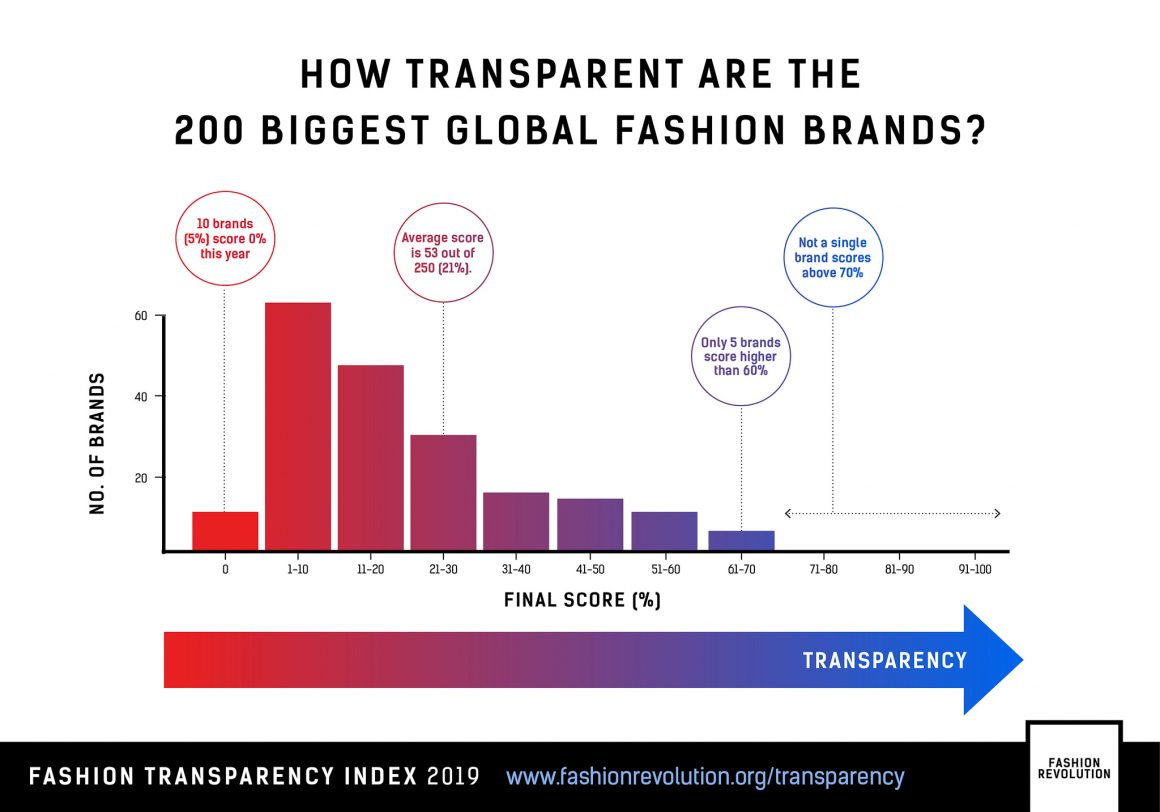Labor and Human Rights in the Fashion Industry 2019

The cheaper and easier information technology is for you to buy wear, the more someone else is paying the price.
Existence a more conscious consumer not only benefits your pocket and the environment just the very people who make your apparel. Here is an overview of the human rights violations going on in the way industry and some suggestions as to what exactly you can exercise to help.
No one shall be held in slavery or servitude (Commodity 4, Universal Declaration of Human Rights).
Trafficking takes many forms. It'southward difficult to recognise and pin down. As a concept, information technology's understood differently depending on who you ask. And notwithstanding, it's the third largest criminal industry in the earth . In garment production it manifests in forced, nether-paid labour.
Forced labour stems from pressure level to go along production costs low. Fast way quite literally ways the fastest production at the everyman price. If a buying country demands cheap clothing quicker and quicker, suppliers might knock down their prices to go on business going. This would have a knock-on event down the supply chain, meaning more workers being under-paid, exploited and abused.
7 Ethical Mode Brands Which Illuminate Inclusivity
All children, whether born in or out of marriage, shall savor the same social protection (Commodity 25, subsection 2).
It'southward estimated that 16.7 million children between v and 17 work in Southern asia . Cheaper than women, children are the least costly employees. Poverty is the chief reason for child labour, withal ironically, children that leave school to work earn less than those who stop school. Whilst no parent wants to bailiwick their child to cruelty, it tin brand more sense to send them to earn money than spend money on an inadequate didactics. Anyango Mpinga of Free As A Human tells me that it'south very mutual in cotton fiber growing for mothers to bring their children to work due to a lack of childcare.
'The farmer's not going to complain,' she says, 'he'southward getting an extra paw for free. Who's going to speak up for the child, no one's going to speak up for the kid.'
Everyone has the right to just and favourable weather condition of work. (Article 23).
Average monthly earnings of garment workers in Asian countries is less than £150 . Many places take no minimum wage, and those that practice, most probable fall short of living wages.
In order to run into need for cost efficiency, informal labour is on the ascent. Those in unofficial employment take naught to protect their rights, thus making it easier to violate them.
Those working at the earliest stages of garment product, such equally cotton fiber farmers are exposing themselves to endless nasty chemicals. Fiddling is done to regulate the apply of harsh chemicals in garment manufacturing. Workers are both direct affected in their jobs and indirectly affected by air pollution and h2o contagion.

There are a number of reasons why the fashion industry is so susceptible to human rights violations, but it roughly boils downwardly to globalisation and consumerism.
97% of items are now made overseas . Supply bondage are then long and complex and crossing multiple borders, it becomes incommunicable to regulate production and trace violations.
It's also not clear where responsibilities prevarication. Governments of producing countries are responsible for enforcing legitimate man rights protection, but brands besides take a moral responsibility to ensure slavery is non involved in the goods that they sell, which should include regulation of the ENTIRE supply chain.
Workers don't know who they are actually producing clothing for and thus can't report abuse college upwardly in the chain. Often, they are banned from forming unions and then any attempt to stand upwardly for their own rights is met with further mistreatment.
Consumers are enervating more and more for less and less. This constant need for more than fuels demand to produce more for less. This means keeping production costs low by paying workers less (or not at all) and completely foregoing legal working hours or ecology regulation.
National Human Trafficking Awareness Day
What current legislation exists to terminate this from happening?
In 1948 the Universal Declaration of Human Rights was signed, interim every bit a mutual standard of what man rights legislation should look like. It covers everything from equality, to freedom, to our treatment of each other and, applies to 'all members of the human family.'
The clearest thing is that the declaration applies to every person equally. Yet, it is important to retrieve that it is mere guideline and does not actually place countries under legal obligation. Information technology is thus left to private countries to regulate human rights inside their corporations.
In 2015 the United kingdom passed the Modern Slavery Act, which requires businesses with an almanac turnover of £36million to disclose the efforts they make towards tackling slavery in their supply chains.
***
What tin can we do about it?
Here are a few things you lot equally consumers can do to start facilitating alter within the manufacture.
Demand full transparency from the brands you purchase your clothes from. Tweet or email them asking how they guarantee no slavery is involved in their production processes. Transparency ways that we can track where products are coming from, seek out where in the supply concatenation things are going incorrect and finally make changes. Fashion Revolution has created a transparency index so yous can keep a track of what your favourite brands are doing.
You can too support their other initiatives, such as petitions, reports and investigations which they send to parliament to advise fairer measures within the industry.
Support small-scale brands and local businesses. Some of our favourite brands who disclose their anti-trafficking measures are: Filippa K , Everlane , Sézane whilst Adidas , Reebok and Patagonia elevation Fashion Revolution's list.
Expect for the Fairtrade label – information technology'south the closest thing we've got right now to a certification of anti-trafficking.
Antislavery.org have advice on how to spot victims of slavery and trafficking and what to do.
Start conversations. Mpinga works with HAART Kenya , a charity working with victims of trafficking and slavery. She tells me that working with communities and having conversations virtually human rights and what's going on is the kickoff mode to heighten awareness.
When we collectively understand what modern slavery actually is, we can begin to identify cases of information technology and implement protection more than finer.

0 Response to "Labor and Human Rights in the Fashion Industry 2019"
Post a Comment